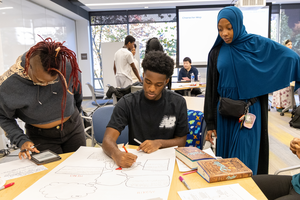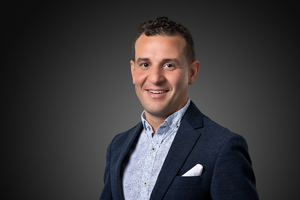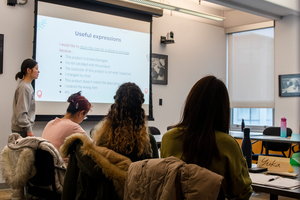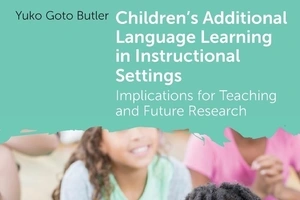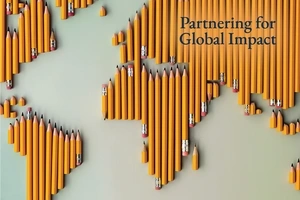When Nora Gross arrived in Philadelphia, she wanted to study how schools help children understand grief, and what they might be able to do better.
She began fieldwork for her Ph.D. in Education, Culture, and Society at the start of an ongoing wave in gun violence in the city, and wound up following a group of boys through a high school where three students died from shootings outside school. The result was her dissertation, “Brothers in Grief: The Stages of Grieving for a School and its Students Following Three Shooting Deaths of Black Teenage Boys”.
In a separate project, Gross created two short films looking at the aftermath of gun violence.
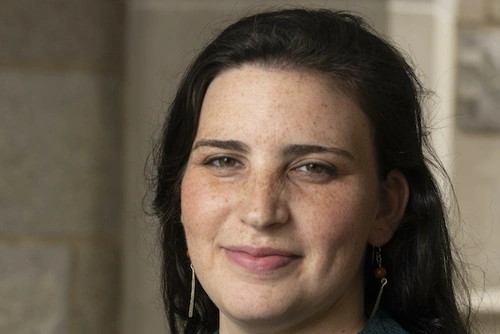
Gross graduated from Penn GSE in 2020, and spent the last year as a Visiting Assistant Professor of Sociology at Boston College. This spring, Gross received the Jolley Bruce Christman and Steven S. Goldberg Annual Award for Best Dissertation in Urban Education. She is currently developing “Brothers in Grief” into a book for University of Chicago Press.
We spoke to Gross about her research process, the importance of social media in the grieving process, and how schools might help their students process trauma by getting political.
Q: How did you decide you wanted to research grief in schools?
A: After finishing college, I taught in a high school writing program in Chicago. During the fall of my first year at the school, three boys died in a freak drowning accident on a field trip. Along with everyone at the school, I was devastated. Doing a lot of one-on-one work as a writing teacher, I spent a lot of time listening to these boys’ friends process their grief and thinking through how the deaths of multiple friends were impacting their ideas about their own futures.
I was a busy teacher mostly just trying to keep my head on straight with my day-to-day responsibilities, but the basis of what would become research questions started to swirl: What should my role as an adult during that time have been? How could I and the school have served these young people better? What were the productive ways they were grieving or could have been grieving?
When I got to Penn in 2013, gun violence wasn’t on my mind, but grief was. I stayed in touch with many of my students from Chicago. By then, they were in their early 20s, but I could see on social media how their lives continued to be shaped by losses.
Q: How did that lead to this project?
A: As I was finishing my coursework at Penn GSE in 2016, gun violence in Philadelphia was starting to rise again. I knew from talking to Philadelphia educators and colleagues at Penn GSE that high schools were having to deal with the fallout. I wanted to explore what that meant for the students and the school community.
I spoke to the principal of the school that I call in my work “Boys’ Prep” shortly after a freshman student, Tyhir, was killed. To my surprise, he was very open, and appreciative that someone would be there thinking about these questions. He was also trying to understand how to support these boys through their grief.
That conversation led to talking with the social worker and a group of teachers who were particularly well connected to the friends of the boy who had been killed.
The social worker and I met with 19 boys, two or three at a time, and explained the project. I said I wanted to know how they were experiencing their loss. I told them that I would likely be in the school for a year or two, that I would sit in the back of their classrooms, and if they were comfortable with it, I would talk with them in the hallway or at lunch, and follow them on social media. I explained how I would use a pseudonym for them, and showed them examples of academic books that might look like mine. In the end, after talking to parents and signing consent forms, only one boy decided not to participate.
I just spent a lot of time hanging out. I especially liked being with the guys in the cafeteria, watching them play UNO, and fight over the last cookie, and really be teenagers, and sometimes talk about grief, but mostly just play UNO.
Q: You planned to follow one group of friends, but then another boy was killed by gun violence. How did that change the project?
A: The second boy who was killed, Jahsun, had actually been one of the initial kids I had been hanging out with and interviewing. I knew him. In our interview, he said something very poignant, that when he talked to his friends, he never knew if it would be his last time talking to them. And that was just something on his mind.
When he died over Thanksgiving weekend in 2017, it totally transformed the project, and made it personal in a way it hadn’t been before. The circle of boys I was talking to expanded. And because I was already in the school, I saw how adults were making decisions in real time about how to support the students, and the students’ immediate reactions.
I saw the same cycles repeated when Bill, the third boy, was killed in April. But it was so late in my research that I had to make the hard decision not to try to add a different friend group to the study.
Q: How did the school and the teachers respond to all this loss?
A: I saw a lot of things, some of which are contradictory. On the one hand, I saw some really meaningful relationships between students and teachers, these one-on-one relationships with mostly women teachers who became foundational supports for individual students. Their classrooms became places where students could go. Even if the teacher was in the middle of teaching a class, boys who had a free period would wander in and sit in the back, just to be close to her.
On the other hand, as a school, obviously, they needed to move forward. So these markers, these memorial moments after a death had to be just moments because they had to focus on education. The boys’ grieving was sort of pushed out. Within a week or two, there was an expectation that they were back in class, doing their regular schoolwork, and if they were grieving, that was something that they had to do on their own time or they should see the social worker.
Because I was interacting in these in-between moments and seeing what they were posting online, I could see they were still intensely grieving. We know grief doesn't go away. And I don’t blame the school, because they can’t create a year of memorials every day. But it sort of silenced some of the boys’ emotions, and Black boys have their emotions restricted by society so much already. They didn’t have a lot of space to process those emotions.
Q: You watched these boys live both in person and online. People often dismiss teens on social media. But you saw something important happen there.
A: There definitely is posturing and posing, and self-portraits that are meant to look candid that were clearly a photo shoot staged with a friend. But there was a whole other dimension of their interaction on social media, mainly happening on the 24-hour-only stories on Instagram. The boys were so much more expressive and vulnerable than I saw them be in person. When I saw them interact with their friends, I never saw them say things they posted online, like in the days after a loss, “I’m broken into pieces,” “I’m falling apart,” or “I need help.”
Instagram was a place in the long term where I saw grief bubble up, where they could share a photo or memory of their friend. They would write “I’m thinking about you.” And they’d get support from their friends. Maybe comments or messages, or a phone call if they posted something that suggested they weren’t in a great place.
Q: Gun violence is a political flashpoint, and many schools try to be apolitical places. In your dissertation, you write about how this is a thorny issue for schools. How so?
A: I think that this school — and there are many schools like it centered around a particular population that are seen as “in need” — often have the unstated goal to get these boys out of the neighborhood. If you give them the tools for social and economic mobility, they can get out of the neighborhood and they’ll be safe. Which can make sense. But in practice, what it means is that sometimes the school decontextualizes itself from the neighborhood. When you are in school, you are learning French and algebra, and you wear a suit and tie. When you go outside, you grieve your friend who died of gun violence. There was a bit of a disconnect because of the school’s goals for social mobility.
I’m still working through this, but that’s one area where I suggest we need to rebalance it a bit. We need to help the students engage with their community, and be able to see the bigger structural forces at play, so that they have the tools to understand why violence might be happening and don’t blame themselves. Some students might emerge from those conversations feeling like they want to do something. Maybe they’ll become activists, maybe they’ll become politicians, maybe they’ll become really engaged citizens. Maybe they’ll want to be historians or sociologists or urban planners or therapists. Engaging with gun violence in a way that might allow grief to turn into grievance — and a possible path to healing — wasn’t happening at this school in the way, for example, it has for the survivors of the Parkland High School shooting. I’m interested in continuing to think about how a school like Boys’ Prep can offer its students these kinds of tools and support in ways that would also align with the school’s educational mission.
Media Inquiries
Penn GSE Communications is here to help reporters connect with the education experts they need.


